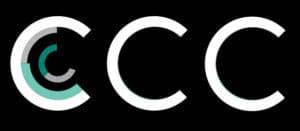Bioremediation
Return to Lesson MenuLesson Overview
Summary
This activity connects the engineered oil-eating abilities of microbes to large-scale bioremediation efforts. Students will observe microbes break down oil in water over the course of a few days. They will also design and observe experimental conditions that affect the rate/ability of microbes to break down oil. Then students will identify another application of engineered oil-eating microbes and what special properties those microbes will need for that application. This lesson is adapted from Edvotek’s Bioremediation Using Oil-Eating Bacteria and University of Missouri – St. Louis’s Slick Oil Lab.
For editable worksheets and powerpoints please login here.
Big Idea(s)
Vocabulary words
Grouping
Groups of 3-4 students
Timing
Prerequisites for students
Learning goals/objectives for students
Content background for instructor
Lesson Implementation/Outline
Activity
Day 1:
Introduction (15 mins):
Ask students if they’ve ever heard of an oil spill. Have volunteers share a definition and/or ways that oil spills are cleaned up. Introduce the idea that microorganisms, like bacteria, can also be used to clean up pollutants like oil in a process known as bioremediation (the video from the content background section can be used to supplement this). Key things to emphasize are that there are naturally occurring bacteria that can break down oil, but this is a very slow process which makes it hard to clean up large oil spills.
However, scientists have engineered (or modified) bacteria to be extra-good at cleaning up oil spills by working faster and breaking down oil in larger quantities. Tell students that they’re taking on the role of scientists who have been tasked with cleaning up a hypothetical oil spill in a body of water near them using newly engineered bacteria. They have to test which conditions will help bacteria break down the most oil.
Then introduce the 5 experimental conditions: best temperature, best pH, the effect of adding nutrients, and the number of microbes needed. Have groups choose a condition (draw from a hat or sticks, randomly assign, etc.) and read the procedure on the student handout before preparing their materials.
Setting up the beakers (45 mins):
Encourage students to follow the student handout. Groups should label their beakers/containers according to the handout before adding anything. Students should wear gloves and be extra careful around the Rid-X.
Once the beakers are set up, have students make observations, take pictures of the beakers, and add them to a google slides presentation for comparisons later in the week. When they’re done, they can place their beakers onto a tray for easy transportation and move them to the
back of the room. They should be left at room temperature and uncovered overnight. Have students make observations again 4 – 6 hours later, and every subsequent day.
Day 5:
Observations (10 mins):
Have students record and discuss observations with their group, and also take pictures to upload to the google slides presentation.
Wrap-up/Closure
Wrap-up/Closure (10 mins):
Give groups a ½ sheet of poster paper and have them brainstorm other uses for engineered bacteria: Where might they be helpful? What would the bacteria do? Would they need special instructions, like a kill switch?
Checking for student understanding
After setting up their beakers, have students predict what will happen and why. Encourage them to consider the role of the water/oil control.
You can also have students discuss how this experiment is applicable to the real world: How could this help in an oil spill? What are pros and cons to this method? How do we make sure the microbes don’t get out of control? Are there other things we could use engineered microbes for?
Extensions/Reflections
Extensions
This activity is closely related to the bioremediation final challenge (see more here). Students can replicate bioremediation using this final challenge prompt.
Groups can also make a poster that (1) summarizes their findings/observations and (2) proposes an engineered microbe to solve a real-world problem. Examples include food shortages, restoring soil quality, managing diseases, landfills, and more. If students are having trouble thinking of an application for engineered microbes, it might be helpful to have a class share-out about ideas. For their proposed engineered microbes, they should include:
• The problem the microbe will solve
• The environmental conditions the microbe will experience
• How to keep the microbe under control
Reflection:
This activity can also be adapted for other types of pollution that may be more relevant to
students’ lives. For example, if students live in an agricultural area, soil contamination that is
cleaned up by phytoremediation could be used instead.
NGSS
Topics
Interdependent Relationships in Ecosystems
ETS1 Engineering Design
Performance Expectations
HS-LS2-7 Ecosystems: Interactions, Energy, and Dynamics
(Students design an experiment to see which conditions are most favorable for oil eating
microbes to clean up a hypothetical oil spill caused by humans.)
Disciplinary Core Ideas
Science and Engineering Practices
Practice 6. Constructing Explanations and Designing Solutions
Cross-Cutting Concepts
Stability and Change
